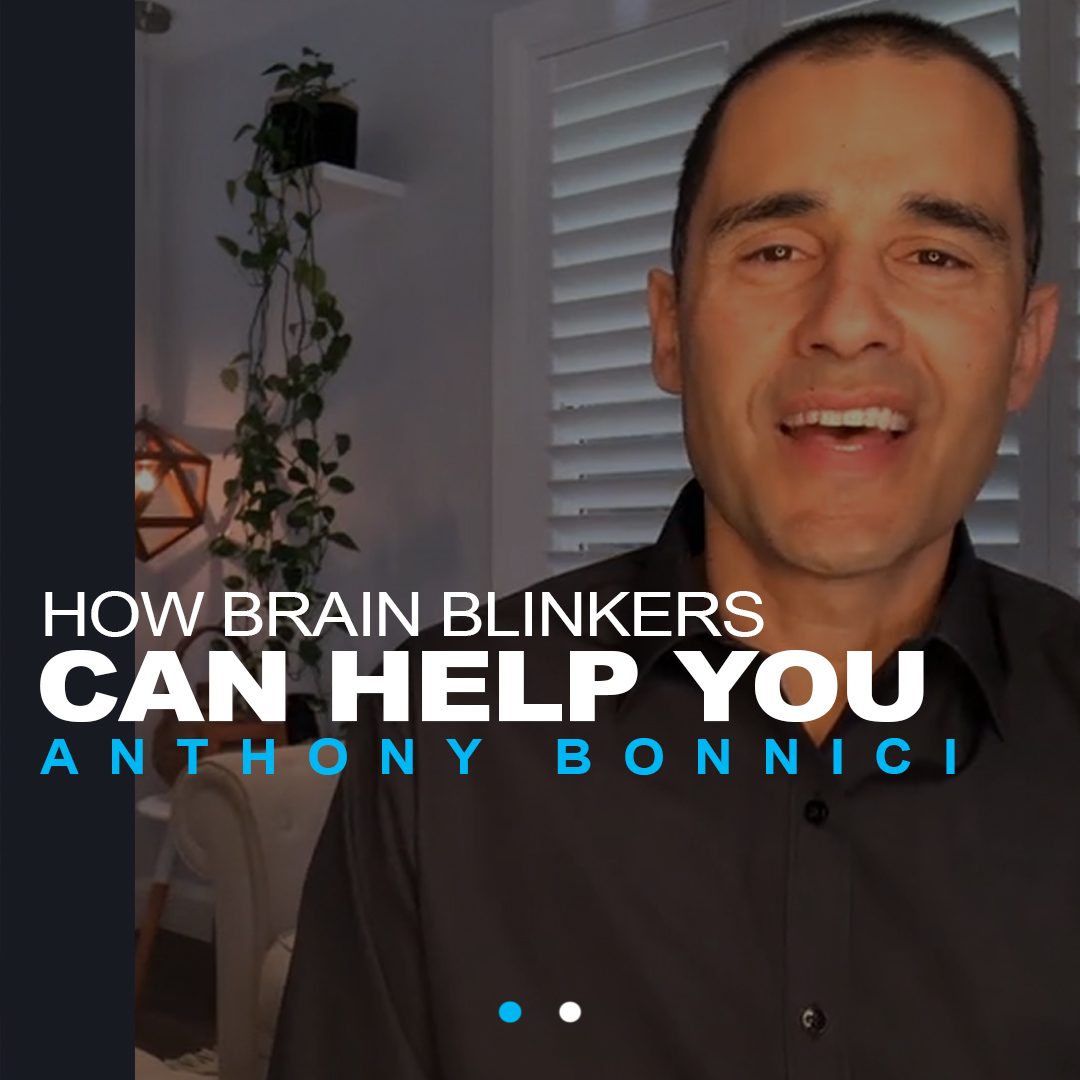I am Anthony Bonnici, the author of this little concept called Brain Blinkers that I have taken around the globe.
Five continents now and hundreds of thousands of people are following this program. For the last 14 and a half years working with individuals and organisations who want to make the change, who want to achieve their best, who want to hit their results, who want to stop making excuses and get the results that they want and deserve.
I want to help you understand a bit more about what we can do, how we can help, and how you can implement some simple strategies to help make your life different.
At the beginning of 2005, I started the business with this notion based on behavioural psychology that helps people realise their potential by understanding what holds them back. I went through several iterations of this particular topic and mental barriers to high performance, ending on the name Brain Blinkers, meaning, what are the barriers that we hold? What are the blinkers that stop us from seeing what is available?
We have used the analogy as you can observe in the logo of horse blinkers or horse blinders.
Blinkers are designed to help the horse focus on what they need to do, just moving ahead very quickly and not to be distracted by what is around them.
But that notion works well only for short periods of focus.
We have metaphorical brain blinkers on when we focus on a particular task. For example, if we have got to finish an assignment and we have got two hours, then we get into our study room or sit at our desk, and we work on hitting those particular goals. That is the function of the brain blinkers. For the last 14 and a half years, I’ve been showing that putting blinkers on for too long, in some cases for decades, actually prevents us from seeing what is possible.
What are the things that were holding in place, that were true for ourselves now but are actually in the way of us achieving greatness?
The Brain Blinkers concept is all about removing those mental barriers to high performance.
This program will help you figure out what is blinding you from achieving the things that might be in your periphery right now.
We focus on three core brain blinkers: limiting beliefs, self-sabotage, and fear.
We additionally help people to identify their behaviours, the way they work, and the way they interact to remove those blinkers. That is the whole focus that I have had for the last 14 and a half years.
To understand, or even touch the surface of what a limiting belief is, we need to know the importance of the three core words. This underpins everything we do with brain blinkers. I believe it underpins how we sell to people and how we influence.
Whatever we hold true, whatever we believe, will always dictate how we think and thus how we act: belief, think, and behave.
It flows down one to the next. Believing what we hold true affects how we think, and that is, how we act. One interesting thing here is that it also works in reverse.
Do you want to change how you feel about yourself, what you believe, or what you hold true about yourself?
Let us use sport as an example. If you want to believe that you are a good cricketer or a good tennis player, then start acting like a good tennis player or cricketer. That is the idea. Act and behave the way you want to believe. Some people call this “living the way we want to be” or “fake it till you make it.”
I found with my children and with the people that I coach that the most important thing is how they act the moment I start the program. If a salesperson, for example, has a fear of cold calling or fear of asking a particular client for some business, I push them to act confidently. As they pretend that they are confident, you can see the difference in their behaviour and thus start to work on their beliefs. That is the reverse way from the behaviors to the beliefs.
In my e-book, which is complementary at anthonybonnici.com, you will read many stories based on that.
However, I want to focus on the concepts of belief, think, and behave.
To change behaviour the short-term approach is usually to modify the behaviour.
In road rage scenarios, for example, if we want to be less angry on the road, we could say “hey, I will be more patient.” This may help in the short term if you are disciplined, but it isn’t necessarily the greatest long term strategy.
One of the most ingenious ways to approach it is to go back to the belief that drives the behaviour.
I used to be a bad road rager. I was aware that I was getting angry on the road, so I went back to the belief that drives the behaviour. This is the real underlying point underneath our brain blinkers concept and will point towards how to identify your own limiting beliefs. For me, on the topic of road rage, my limiting belief was, “I believe people should drive like me.” I have since modified my belief, and it has changed my behaviour.
If you want to make the change, to achieve your best, and to hit your results, visit our Brain Blinkers Online Program.


